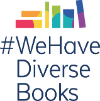 Enlarge Cover
Enlarge Cover
When Violet's father comes to pick her up at school, one of her classmates asks: “How come your Dad is blue and you’re not?” Violet has never even thought about this before. Her mother is red, and her father is blue – so why is she violet?
- Age:
- 5 to 8
- Grade:
- p to 2
- Reading age:
- 6 to 8
- Short-listed, The Blue Spruce Award, The Ontario Library Association's Forest of Reading Program
- Commended, Selected for #WeNeedDiverseBooks #Booktalking Kit
- Commended, The Canadian Children's Book Centre's "Best Books for Kids and Teens 2011" List
"This is a wonderful story about self-acceptance and individuality. The illustrations are great. As one would expect from a book about colours, it’s bright and vibrant and eye catching."
"Violet is a sensitive and memorable story… The celebration of differences message is very clear in Violet, which is additionally enriched by a plethora of spicy, imaginative, full page color illustrations."
"Violet is violet. Artist Jovanovic has painted a colourful, topsy-turvy world for her heroine to inhabit, and Violet is a stick-figure girl with a mop of black, spiky hair and pale purple skin."
"I can see this book being a real asset for discussions and themes on differences and diversity."
"Of course, this story lends itself to all sorts of activities with color mixing or elementary genetics, as well as serving as a good conversation starter."
"Tania Stehlik’s tale is simple yet effective, and illustrator Vanja Vuleta Jovanovic keeps things interesting by creating a world that is part Dr. Seuss, part The Little Prince, and part something else quite unique...while the message will have a special resonance for mixed-race families, any kid who has ever felt “different” will feel right at home."
"This is a wonderful story about self acceptance and individuality... It has been an eye opener for my kids, as I’m sure it will be for yours."
"This is a visually interesting way to teach children about how people come in all sorts of different races."
"Violet, anticipating the first day of school, is nervous about making friends and fitting in. And while her fears are partially founded when students are surprised to discover the color of her parents, Stehlik’s message remains upbeat...Although the setting is clearly the lower grades of elementary school, long-limbed Violet and her peers look like middle schoolers, and the hand-drawn feel of the pictures brings to mind the anime-influenced journal marginalia of an intensely emotional adolescent. If the message is less than subtle, it should still be a comfort to readers, particularly those of mixed heritage, who struggle with belonging."
Buy this book at:
Buy the e-book:
Annotations
Violet
When Violet's father comes to pick her up at school, one of her classmates asks: “How come your Dad is blue and you’re not?” Violet has never even thought about this before. Her mother is red, and her father is blue – so why is she violet?
Violet’s story helps readers to contemplate their own identities and consider the diversity that surrounds them, in classrooms and the wider communities. Violet questions her mixed heritage and gains self-respect when she realizes she’s not the only one who is different. Readers who have tried to fit in to a new school environment can learn from Violet’s story, a book about personal pride and inclusive communities. For character education, this can be shared for helping teach respect.
Author available for school visits.
Source: Association of Canadian Publishers. Top Grade Selection 2016.
Violet
When Violet starts at a new school, she wonders why she’s not the same colour as her parents. You see, her dad is blue, her mom is red and she is purply-violet. Her mother gently explains how she is a bit of both her mom and her dad and that she shouldn’t worry about being like others — she should just be herself.
Source: The Canadian Children’s Book Centre. Best Books for Kids & Teens. 2011.





